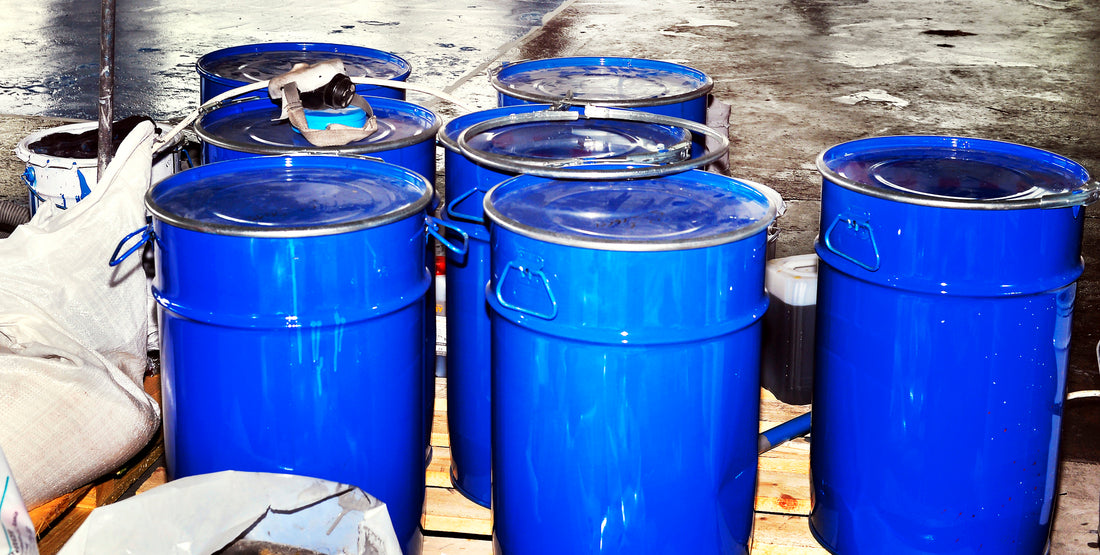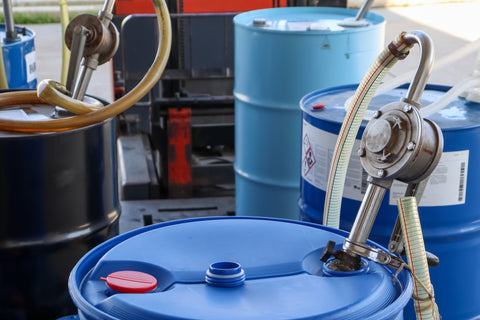15-Gallon Drum Dimensions
If you work in manufacturing, warehousing, or process heating, you know that drums are an essential part of your operation. Drums are used to store and transporting all sorts of materials, from chemicals and food products to oil and lubricants. And when it comes to drums, one of the most common sizes is the 15-gallon drum.
In this article, we'll take a closer look at the dimensions of a standard 15-gallon drum, as well as some of the variations you might encounter. We'll also explore the differences between 15-gallon and 16-gallon drums and offer recommendations for purchasing and using these containers effectively.
Standard 15-Gallon Drum Dimensions
When it comes to 15-gallon drums, there are some standard dimensions you can expect to encounter. These dimensions can vary slightly depending on the manufacturer. Still, in general, a 15-gallon drum will have the following dimensions:
- Exterior dimensions
- Height: 26.5 inches (67.3 cm)
- Diameter: 16 inches (40.6 cm)
- Interior dimensions
- Height: 26 inches (66 cm)
- Diameter: 15.5 inches (39.4 cm)
- Weight capacity:
- 400 pounds (181 kg)
It's worth noting that while these dimensions are standard for many 15-gallon drums, you may encounter variations in height, diameter, or weight capacity depending on the specific type of drum you're using. It's always a good idea to double-check the dimensions of your drum before making any calculations or measurements.
Here's a table summarizing the dimensions of a standard 15-gallon drum:

Understanding the standard dimensions of a 15-gallon drum can be incredibly useful when it comes to storage, transportation, and handling. By knowing the exact dimensions of your drum, you can calculate how many drums you'll need to store a certain amount of material or determine how much space you'll need to transport your drums safely.

Types of 15-Gallon Drums
Several types of 15-gallon drums are commonly used in industrial applications. Here are a few examples:
- Steel drums: Steel drums are among the most common types of 15-gallon drums. They're known for their durability and can withstand extreme temperatures, making them ideal for storing and transporting hazardous materials. They're also corrosion-resistant, making them suitable for harsh outdoor environments.
- Plastic drums: Plastic drums are lightweight, easy to handle, and resistant to rust and corrosion. They're often used for storing food products or chemicals that are less hazardous than those stored in steel drums. However, plastic drums may not be suitable for use in high-temperature environments.
- Fiber drums: Fiber drums are made from paperboard or other fiber material. They're lightweight, easy to handle, and typically less expensive than steel or plastic drums. However, they may not be suitable for storing certain chemicals or hazardous materials.
- Salvage drums: Salvage drums are designed for use in the transportation and storage of damaged or leaking drums. They're made from heavy-duty materials and are often used in emergency spill response situations.
There are other types of 15-gallon drums available, and the type you choose will depend on your specific needs and the materials you'll be storing or transporting. When selecting a drum, consider factors such as durability, weight capacity, and compatibility with the materials you'll be working with.
Variations in 15-Gallon Drum Dimensions
While the standard dimensions of a 15-gallon drum are fairly consistent across the industry, there are some variations you might encounter depending on the manufacturer or specific type of drum. Here are a few examples:
- Open head vs. closed head: 15-gallon drums are available in open and closed-head configurations. Open-head drums have a removable lid that can be sealed with a clamp or bolt ring, while closed-head drums have a permanent lid with a small opening for filling and dispensing. The dimensions of these drums may vary slightly depending on the type of head they have.
- UN rating: Some 15-gallon drums are rated for specific hazardous materials by the United Nations (UN). These drums may have thicker walls or other design features to meet UN specifications. As a result, their dimensions may differ slightly from standard 15-gallon drums.
- Custom dimensions: Some manufacturers offer custom 15-gallon drums with non-standard dimensions. These drums may be shorter, wider, or taller than standard drums to meet specific customer needs.

It's important to know any variations in dimensions when working with 15-gallon drums. If you're unsure whether a particular drum will meet your needs, it's always a good idea to double-check the dimensions and weight capacity before making a purchase. This can help ensure you select the right drum for your specific application.
Difference Between 15-Gallon and 16-Gallon Drums
While 15-gallon drums are a common size for industrial applications, you may also come across 16-gallon drums. Here are a few key differences between these two sizes:
- Capacity: As the name suggests, a 15-gallon drum can hold up to 15 gallons of material, while a 16-gallon drum can hold up to 16 gallons. This means that if you need to store or transport slightly more material, a 16-gallon drum may be a better option.
- Dimensions: While the capacity of the two drums differs slightly, the dimensions are also different. Generally, a 16-gallon drum will be slightly taller and wider than a 15-gallon drum.
- Use cases: The specific use cases for 15-gallon and 16-gallon drums can also differ. For example, if you're storing or transporting hazardous materials, you may need to use a drum that meets specific UN regulations. Sometimes, a 16-gallon drum may be a better option for meeting these regulations.
It's important to consider the specific needs of your application when selecting a drum size. While the differences between 15-gallon and 16-gallon drums may seem small, they can make a big difference in capacity and compatibility with specific materials. By understanding the differences between these two sizes, you can make an informed decision when selecting the right drum for your needs.
Key Takeaways and Recommendations
In this article, we've explored the standard dimensions of a 15-gallon drum, as well as some of the variations you might encounter. We've also looked at the differences between 15-gallon and 16-gallon drums and discussed the importance of selecting the right drum for your specific application.
If you work in manufacturing, warehousing, or process heating, understanding the dimensions and types of 15-gallon drums can be incredibly useful. By knowing the exact dimensions of your drums, you can ensure that you can store and transport your materials safely and efficiently.
When selecting a 15-gallon drum, consider weight capacity, durability, and compatibility with specific materials. By selecting the right drum for your needs, you can help ensure your operation runs smoothly and safely.
We hope that this article has provided you with the information you need to make an informed decision when it comes to 15-gallon drums. If you have any questions or would like more information, don't hesitate to contact a trusted supplier or manufacturer.







